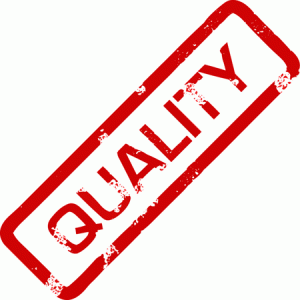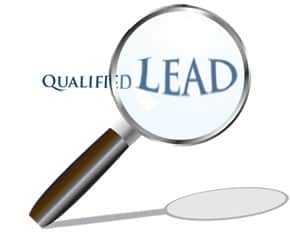Why Do You Need Lead Scoring?
 If salespeople of the world know anything, they know one thing – persistence is key. When you make multiple efforts to contact and follow up with customers, you’re doing a few things in the process.
If salespeople of the world know anything, they know one thing – persistence is key. When you make multiple efforts to contact and follow up with customers, you’re doing a few things in the process.
You’re showing them you want their business. Sales teams who make a few follow ups, then fall off the map lose sales that may have converted over time.
You’re showing them you care. If you care enough to follow up, customers expect the same level of persistence and service when you actually do serve them.
You’re showing them you want the sale. If you develop a rapport with customers, you’re more likely to make the connection that sells.
For many organizations, the problem is not in closing sales for qualified customers – the problem is drawing the fine line between customers who are qualified and those who you could lose if you continue to contact them. Sales tracking and lead scoring helps you make the determination as to who’s qualified and who could convert in the longer term. Let’s answer the question, why do you need lead scoring?
Deploying Lead Scoring
Many companies don’t bother to implement lead scoring because it would take time to actually come up with a system. It’s a catch 22 – you want to get your team scoring leads so you can save time and get better sales coming in, but to actually make the time to develop the system will cost time on the phones and time for you to implement.
This is why marketing automation is changing the game. With a small investment and the help of a qualified marketing automation company, lead scoring and qualification couldn’t be easier. It works like this: You explain your sales process and your thoughts on lead scoring to your marketing automation company. They’ll streamline everything, set it up with your guidance and assistance – then the system does everything for you.
Onboarding Employees
This is typically not a daunting process. With Lead Liaison, employees are typically getting the hang of new processes and managing leads better than ever in under a week. Plus, your marketing department will love the ease of accessing metrics and necessary info all in one place.
Here’s a scenario many companies face: Bob has developed a great rapport with a client, but leaves to go to another sales job. After he leaves, John (a new salesperson) is ready to take on that old client, but has little information that does him any good. The details Bob typed into the CRM are helpful, but aren’t really going to address what John needs to know at the organizational level to approach the client. He loses the sale.
With lead scoring, your sales people don’t just discuss the finer details but have a clear cut process about how likely the client is to purchase and where they’re at in the funnel. This means that regardless of who’s following up, the follow up is solid and conducted under organizational guidelines that meet what can be accurately offered to the client. This is a great way to streamline your sales team’s organizational efforts as well as better appeal to clients.
It’s time to take a look at how marketing automation can streamline your funnel. Take a look at Lead Liaison’s robust offerings today!










